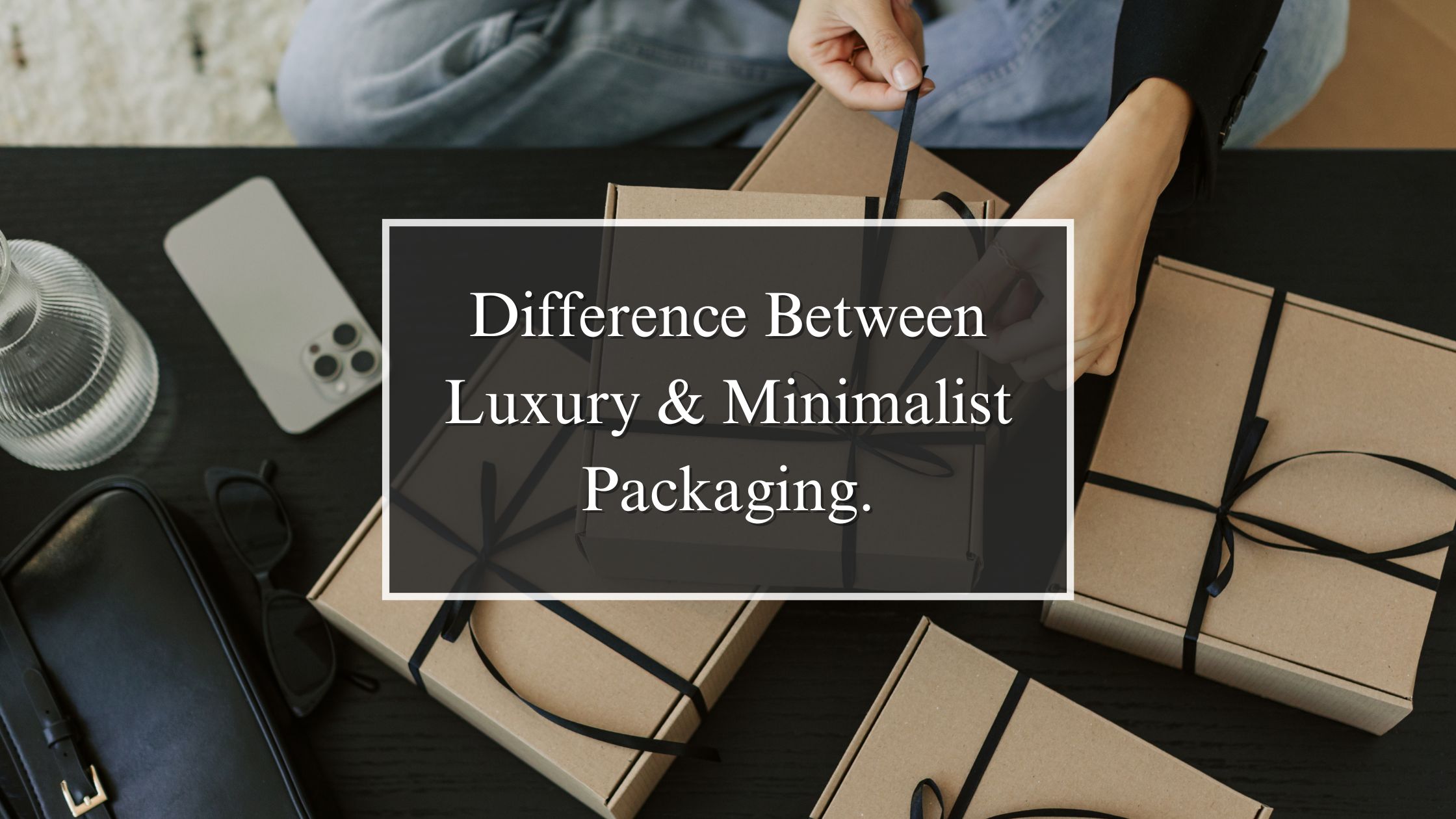Introduction – Luxury Vs Minimalist Packaging
In the competitive geography of product marketing, packaging plays a vital part in shaping consumer comprehensions and impacting copping opinions. Two prominent packaging doctrines — luxury and minimalist — offer distinct approaches, each with its own set of advantages and considerations. Understanding the nuances of both can help brands determine which aligns stylish with their identity and prayers to their target followership.
The appeal of Luxury Packaging
Luxury packaging is characterized by substance, intricate designs, and the use of decoration accoutrements. It’s designed to elicit a sense of exclusivity and high value, frequently appealing to consumers seeking indulgence and status.

Crucial Features of Luxury Packaging
- Premium Material – Application of high- quality substances similar as velvet, silk, or heavyweight cardstock.
- Intricate Design Elements – Incorporation of embossing, antipode stamping, and elaborate plates.
- Enhanced Unboxing Experience – Creating a memorable and engaging process when the product is opened.
Advantages
- Perceived Value Enhancement – High- end packaging can justify a decoration price point by elevating the product’s perceived worth.
- Brand Isolation – Distinctive packaging sets a brand piecemeal in a crowded business.
- Emotional Connection – An exquisite unboxing experience can foster client fidelity and reprise purchases.
Considerations
- Cost Counteraccusations – Premium accoutrements and complex designs can significantly increase product costs.
- Environmental Impact – Luxury packaging frequently involves accoutrements that aren’t eco-friendly, which may discourage environmentally conscious consumers.
The substance of Minimalist Packaging
Minimalist packaging embraces simplicity, functionality, and sustainability. It focuses on clean designs, essential information, and frequently utilizes eco-friendly accoutrements, appealing to consumers who value environmental responsibility and plumpness.

Crucial Features of Minimalist Packaging
- Simplicity in Design – Use of clean lines, monochromic color schemes, and ample white space.
- Functional Accoutrements – Preference for recyclable or biodegradable accoutrements .
- Clear Communication – Furnishing essential product information without clutter.
Advantages
- Cost effectiveness – Simpler designs and accoutrements can reduce product charges.
- Environmental Sustainability – Eco-friendly packaging prayers to a growing member of environmentally conscious consumers.
- Ultramodern Aesthetic – A satiny, minimalist look can convey complication and align with contemporary design trends.
Considerations
- Perceived Value – Some consumers might associate minimalist packaging with lower quality or value.
- Brand Identity Fit – Brands deposited as luxurious or indulgent may find minimalist packaging deranged with their image.
Aligning Packaging with Brand Identity
Choosing between luxury and minimalist packaging should be a strategic decision embedded in brand identity, target followership preferences, and request positioning.
Factors to Consider
- Target followership – Understand the demographics and psychographics of your consumers. Luxury packaging may attract those seeking decoration gests , while minimalist packaging could appeal to practical and eco-conscious buyers.
- Brand Values – Align packaging choices with the core values and communication of your brand.
- Product Type – Consider the nature of the product. High- end electronics or fashion particulars might profit from luxuriant packaging, whereas organic or sustainable products might be more suited to minimalist designs.
- Market Trends – Stay informed about assiduity trends and consumer preferences, which can shift over time.
Striking a Balance The Hybrid Approach
Some brands successfully integrate rudiments of both luxury and minimalist packaging to produce a unique and balanced donation. This mongrel approach can offer the stylish of both worlds, appealing to a broader followership.
Strategies for a Hybrid Approach
- Picky Use of Premium Accoutrements – Incorporate high- quality accoutrements in specific areas, similar as accentuations or inner stuffing, while maintaining an overall minimalist design.
- Eco-Luxury Accoutrements – Use sustainable yet luxurious accoutrements like bamboo or recycled essence to convey both fineness and environmental responsibility.
- Clean Design with Elegant Touches – Borrow a minimalist layout enhanced by subtle, sophisticated rudiments like antipode accentuations or embossing.
Conclusion
The choice between luxury and minimalist packaging isn’t a one- size- fits- all decision. It requires a thoughtful analysis of your brand’s identity, target followership, and request positioning. By precisely considering these factors, you can elect a packaging strategy that not only protects and presents your product but also reinforces your brand’s values and resonates with your consumers.
